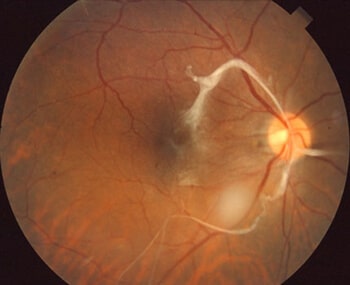How Do You Get a Macular Pucker?

Most of the time, a macular pucker occurs with aging. Over your lifetime, the vitreous (the clear gel like substance that fills the center of your eye and gives it a round shape) shrinks and pulls away from your retina (the light-sensitive layer of tissue in the back of the eye). This is called a vitreous detachment and it happens to everyone as they get older.
For some, the shrinking vitreous can cause microscopic damage to the retina. As it heals, scar tissue may form on the surface of the retina, and that can create wrinkles or “puckers.” A macular pucker can occur when the scar tissue forms over a part of the retina called the macula.
What are the Symptoms of a Macular Pucker?
Vision loss from a macular pucker can vary. One patient can experience no or very little vision loss, while another may experience severe vision loss, although blindness is uncommon.
The most common symptoms are:
- Blurred vision
- Distorted vision
- Seeing wavy lines
- Difficulty seeing small print
- Tiny gray blind spot in central vision
How is a Macular Pucker Treated?
In cases of mild blurriness and distortion, patients should be sure to schedule regular eye exams but don’t usually require additional treatment. Patients generally adjust to mild visual distortion since it does not affect daily activities like reading or driving. In rare cases, a severe macular pucker may cause vision to deteriorate to the point that it affects daily activities such as reading and driving. When this happens, the team of Desert Retina Consultants may recommend surgery to remove the scar tissue affecting your vision.
One type of surgery used to treat macular pucker is call vitrectomy. During the surgery, the vitreous is removed and replaced with another solution. The vitreous is a gel-like substance that fills the middle portion of your eye. The scar tissue which causes the macular pucker is removed.









